3D scanner of new generation EinScan-SE
Good afternoon, dear readers of Geektimes! The Shining 3D company appeared on the Russian market only some two years ago, but during this time it has already managed to establish itself as a manufacturer of first-class equipment for three-dimensional printing and scanning. Products offered to her combine high quality workmanship, opportunities and affordable price.
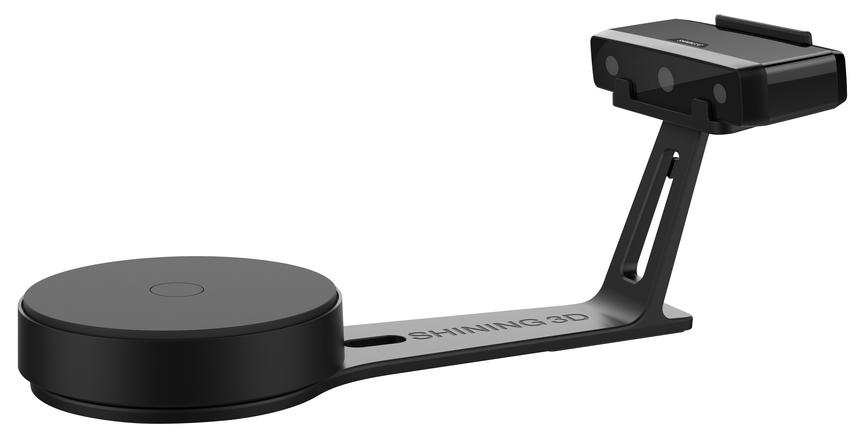
In April of this year, the company introduced budget scanners of a new generation of EinScan-SE, and now, after only two months, they are already in Russia. A test sample also appeared in our office, so we are in a hurry to acquaint readers with it in detail by demonstrating how the end user gets it.
Camera resolution: 1.3 MP;
Number of cameras: 2;
Light source: white light;
Scan mode: fixed, automatic;
Minimum scanning area: 30x30x30 mm;
Maximum scanning area (automatic mode): 200x200x200 mm;
Maximum scanning area (fixed mode): 700x700x700 mm;
3D scanning speed (fixed mode): 8 seconds;
3D scanning speed (automatic mode): 2 minutes;
Distance to the object: 290-480 mm;
Scanning accuracy: 0.1 mm;
Data format: OBJ, STL, ASC, PLY;
Compatible with OS: Win7, Win8, Win10 (64 bit);
Dimensions: 570 x 210 x 210 mm;
Weight: 2.5 kg;
Warranty: 1 year.
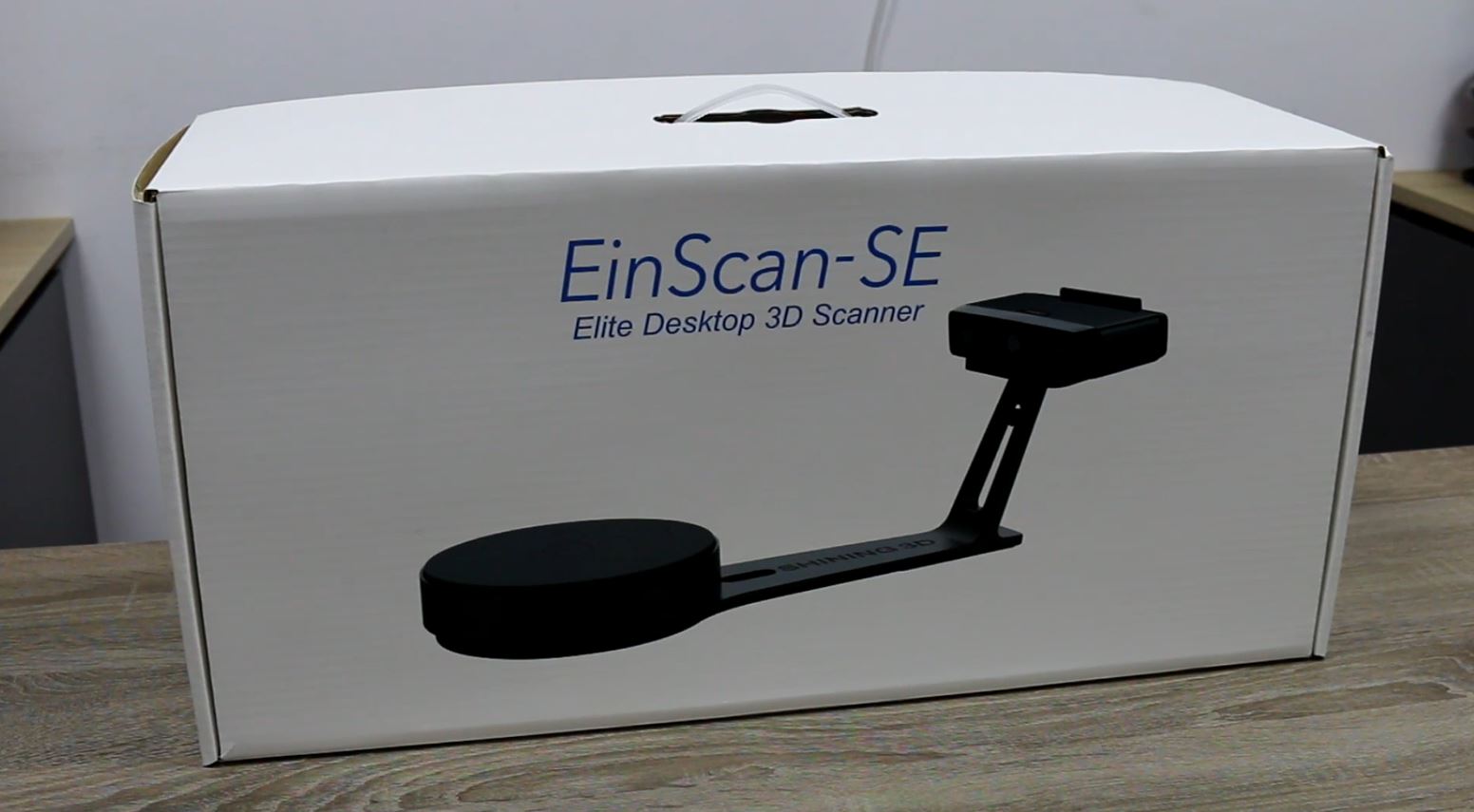
The scanner is delivered in a white cardboard box with dimensions: 570x210x210 mm and a mass of about five kilograms, equipped with a convenient carrying handle. The very same device assembly weighs only 2.5 kg.

Open the box and see the cradle of thick foam. Components are located in separate slots, and in the upper part lie: gauge fields, instructions, power supply and various trivia.
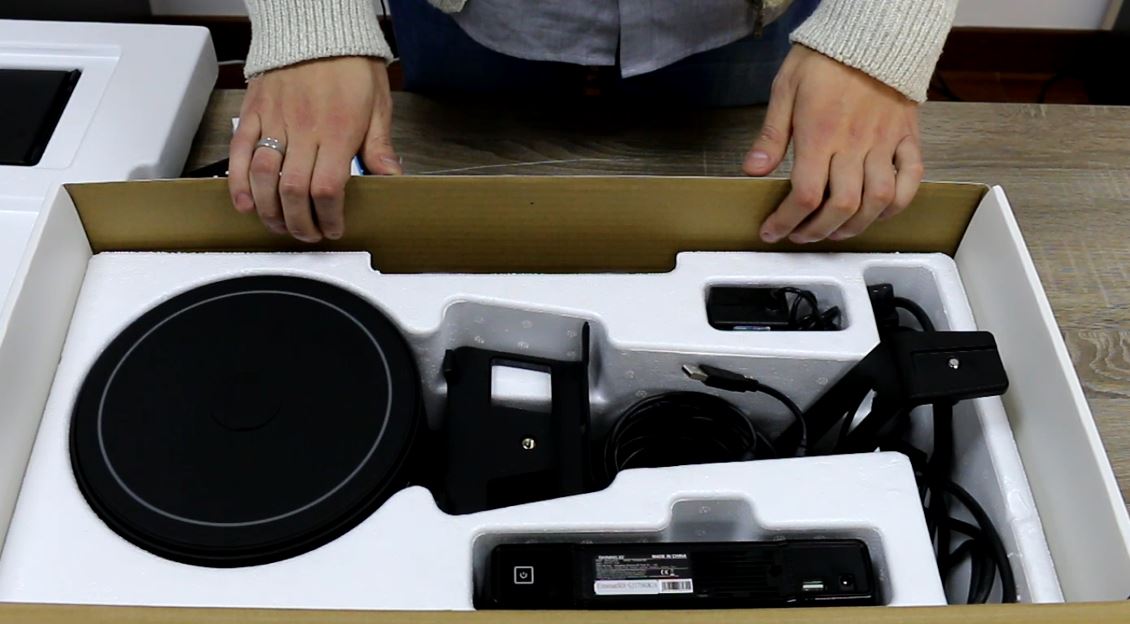
In the lower lodgement are: a scanning unit, a bracket for mounting and a swivel table. The packaging is well thought out and reliably protects the contents from accidental damage.
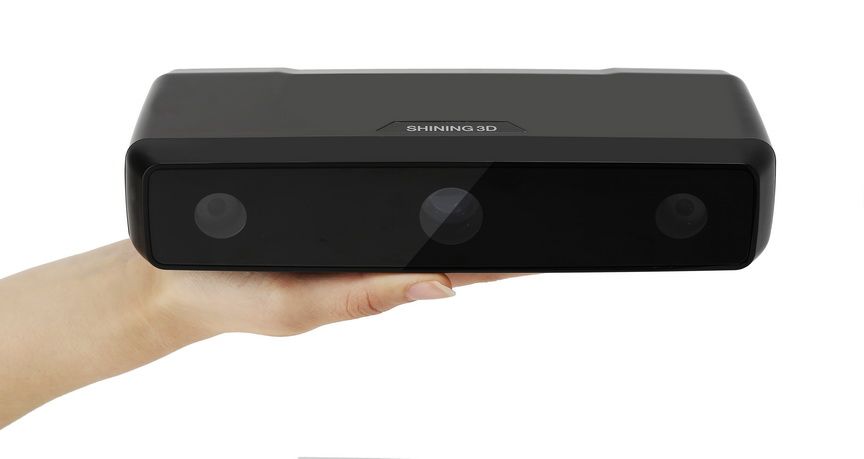
The most important part of the device is the scan unit. It is equipped with two cameras and a projector.

The turntable for scanning has high quality workmanship. No squeaks. All parts fit perfectly together.
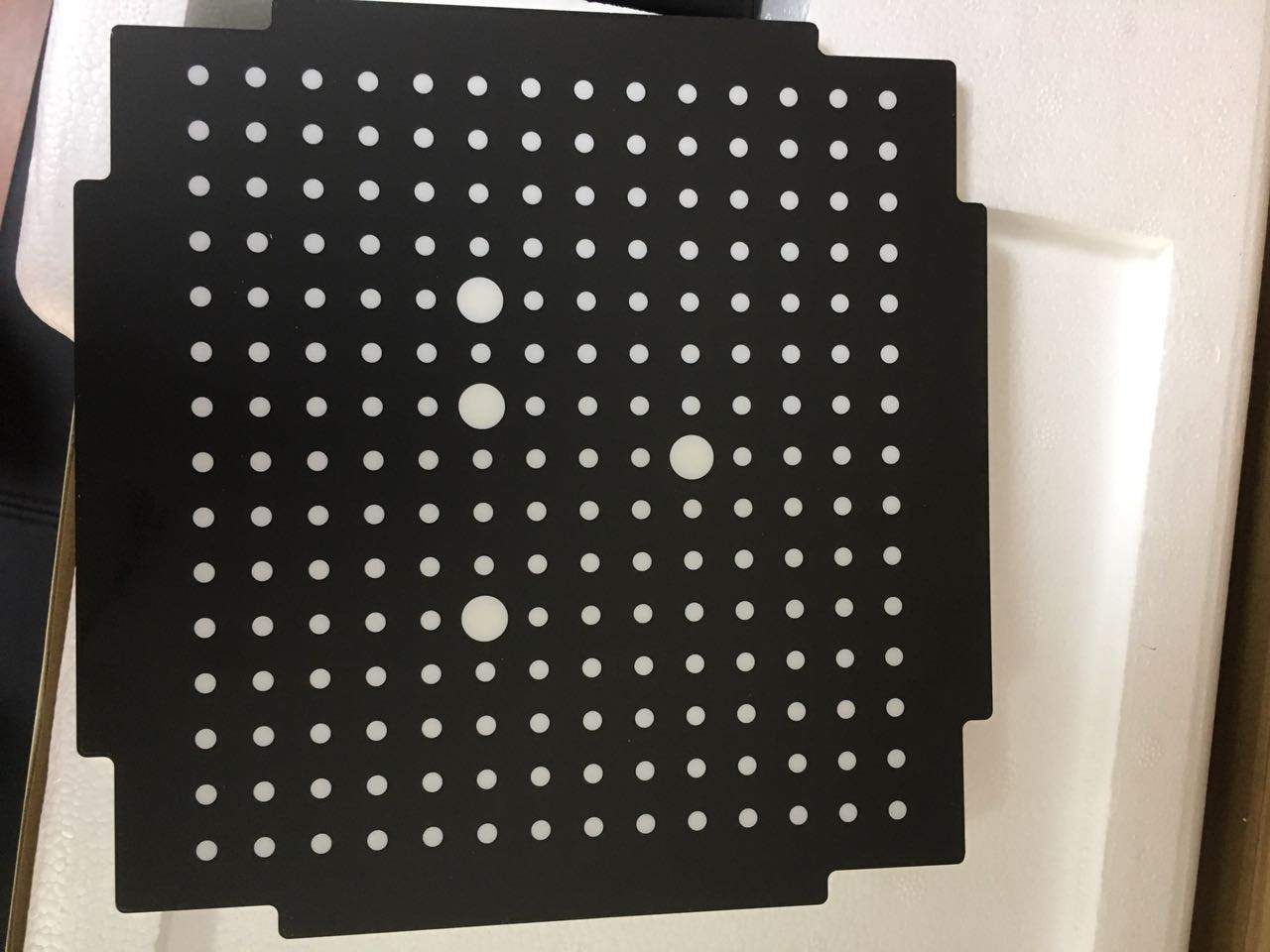
Calibration field for initial scanner setup. How to work with it is shown in detail in the instructions.
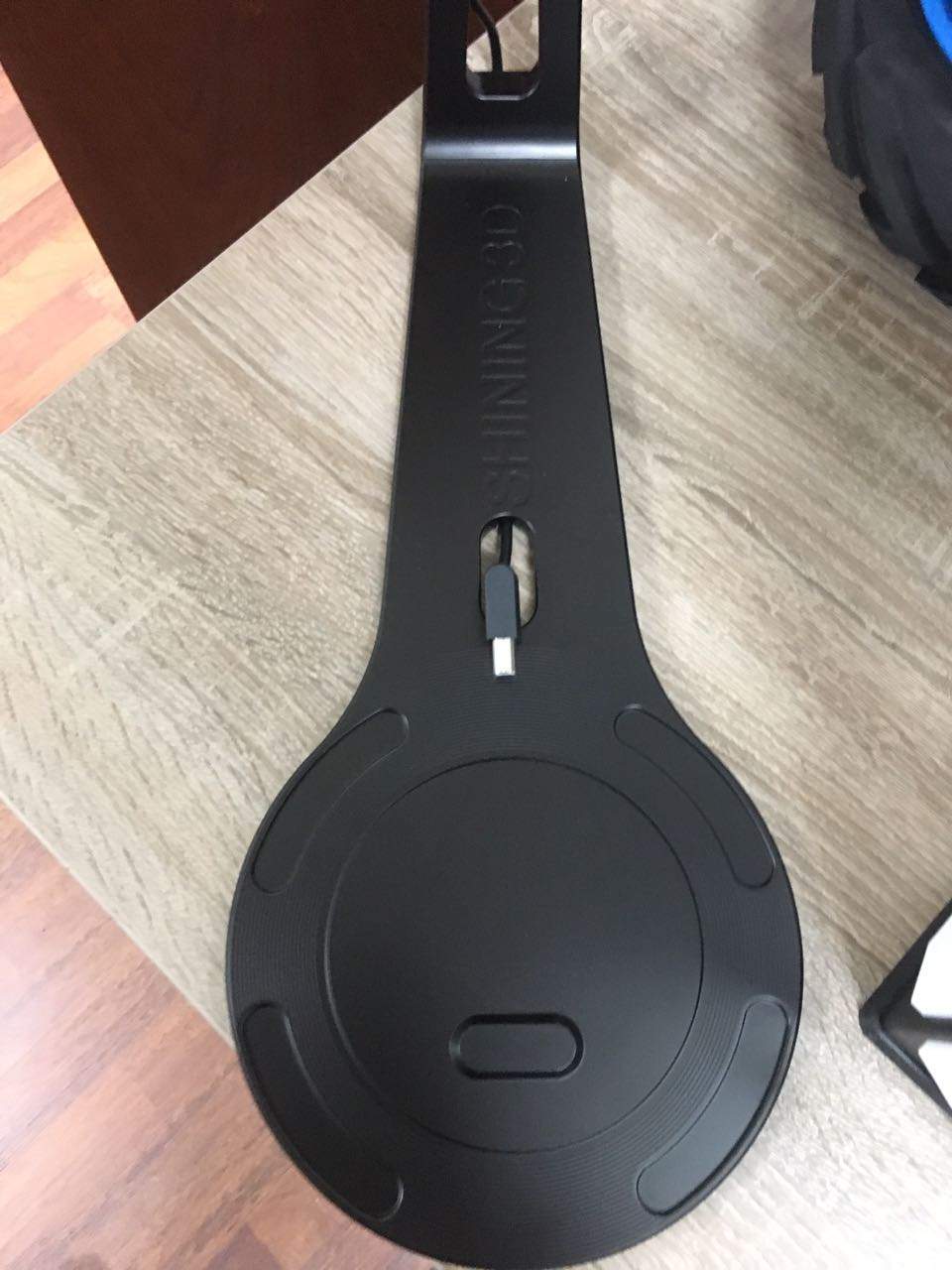
The basis for placing the remaining parts of the scanner.
The main nodes are connected using a USB cable.
In order to assemble the scanner in working position, it is enough to read the instructions. The whole process is shown step by step and with explanatory illustrations. Everything is clear and simple, as in the instructions for IKEA furniture.
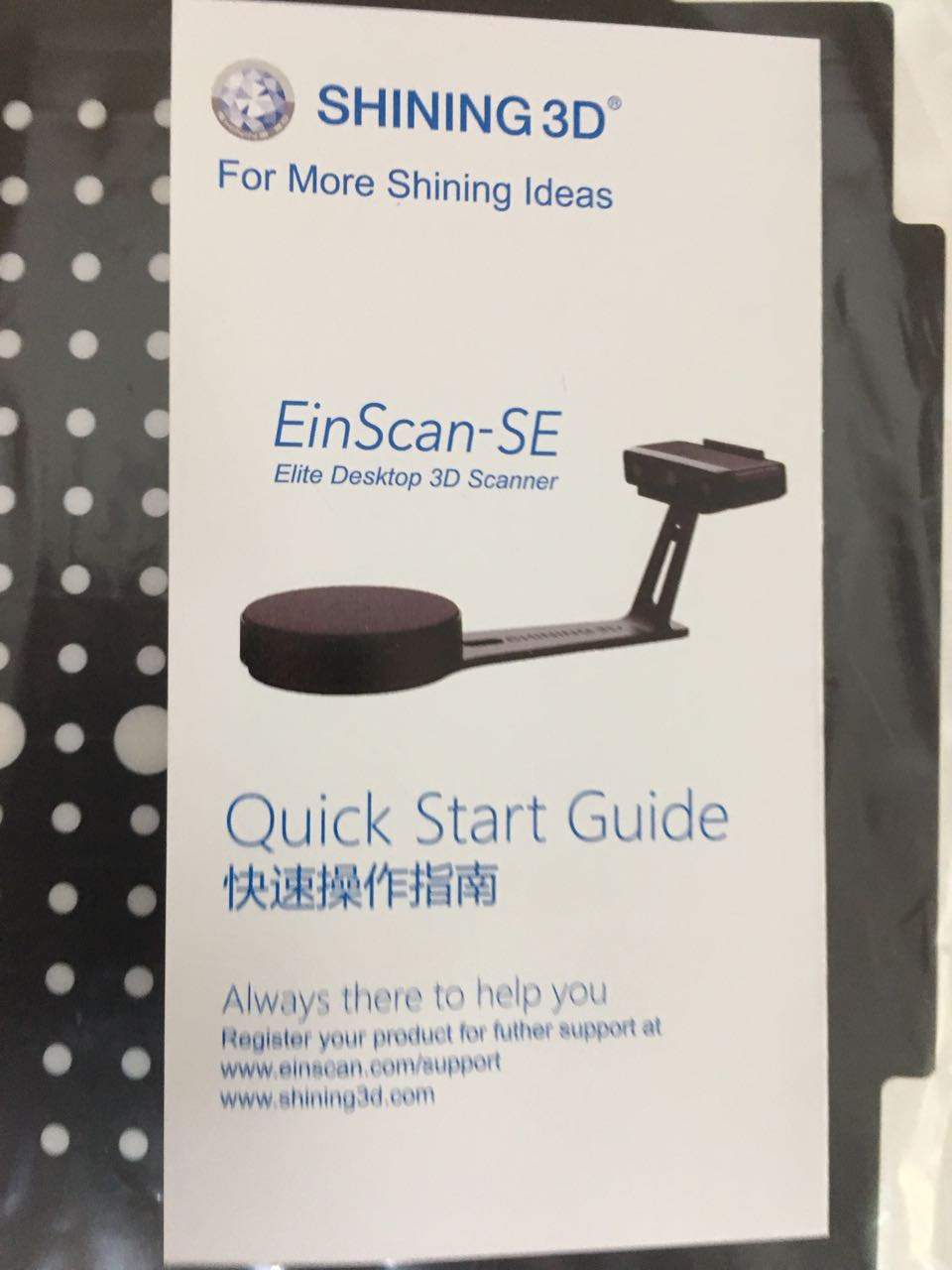
The main ideology of Shining 3D is the creation of universal equipment available for use by everyone, even if they do not have special experience in 3D scanning. The assembly and configuration of EinScan-SE is maximally simplified.

Not difficult and calibration. Just follow the instructions.
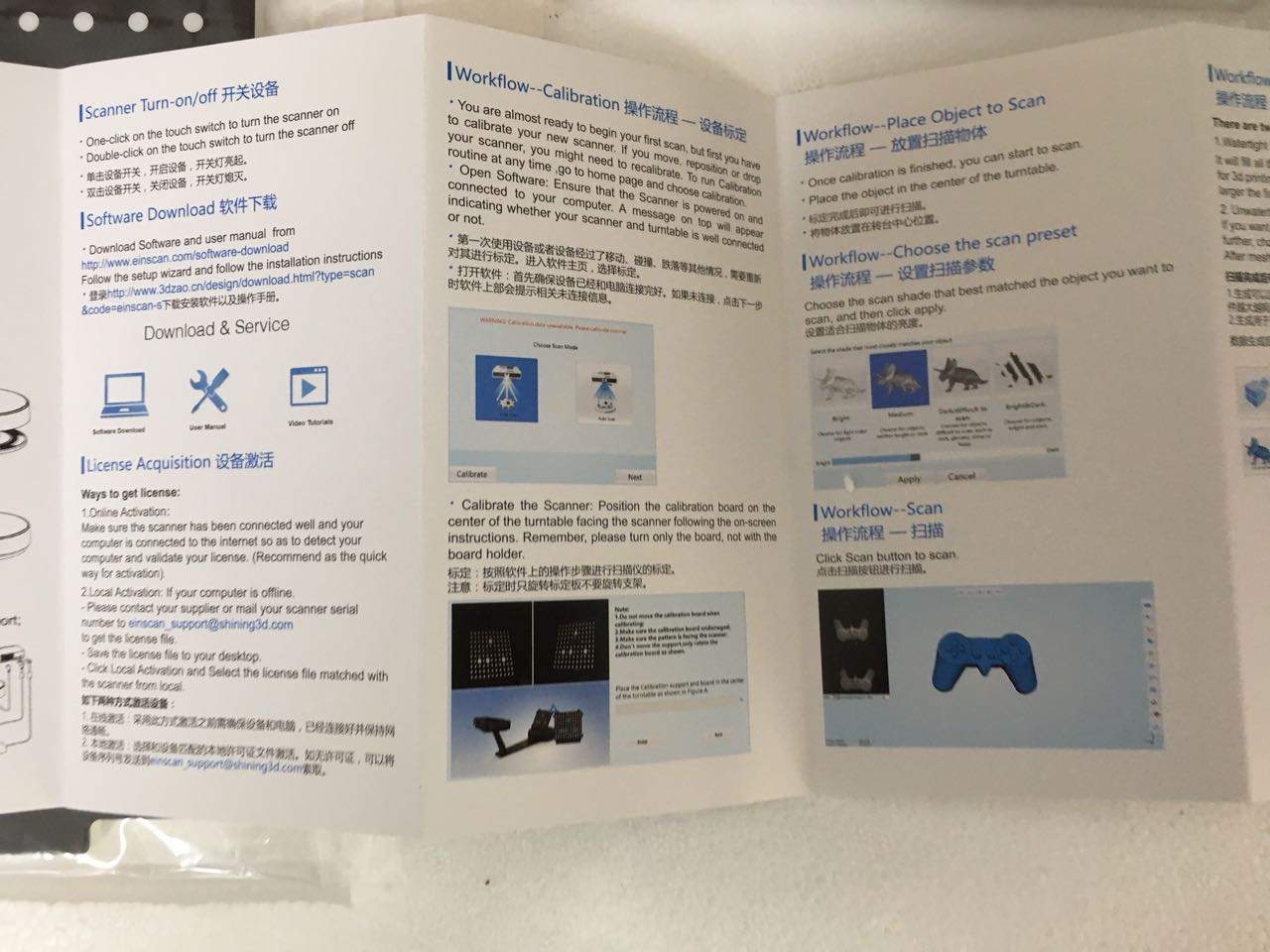
The scanning process is fully automated, so a beginner can handle it.
All items on the table. What next?
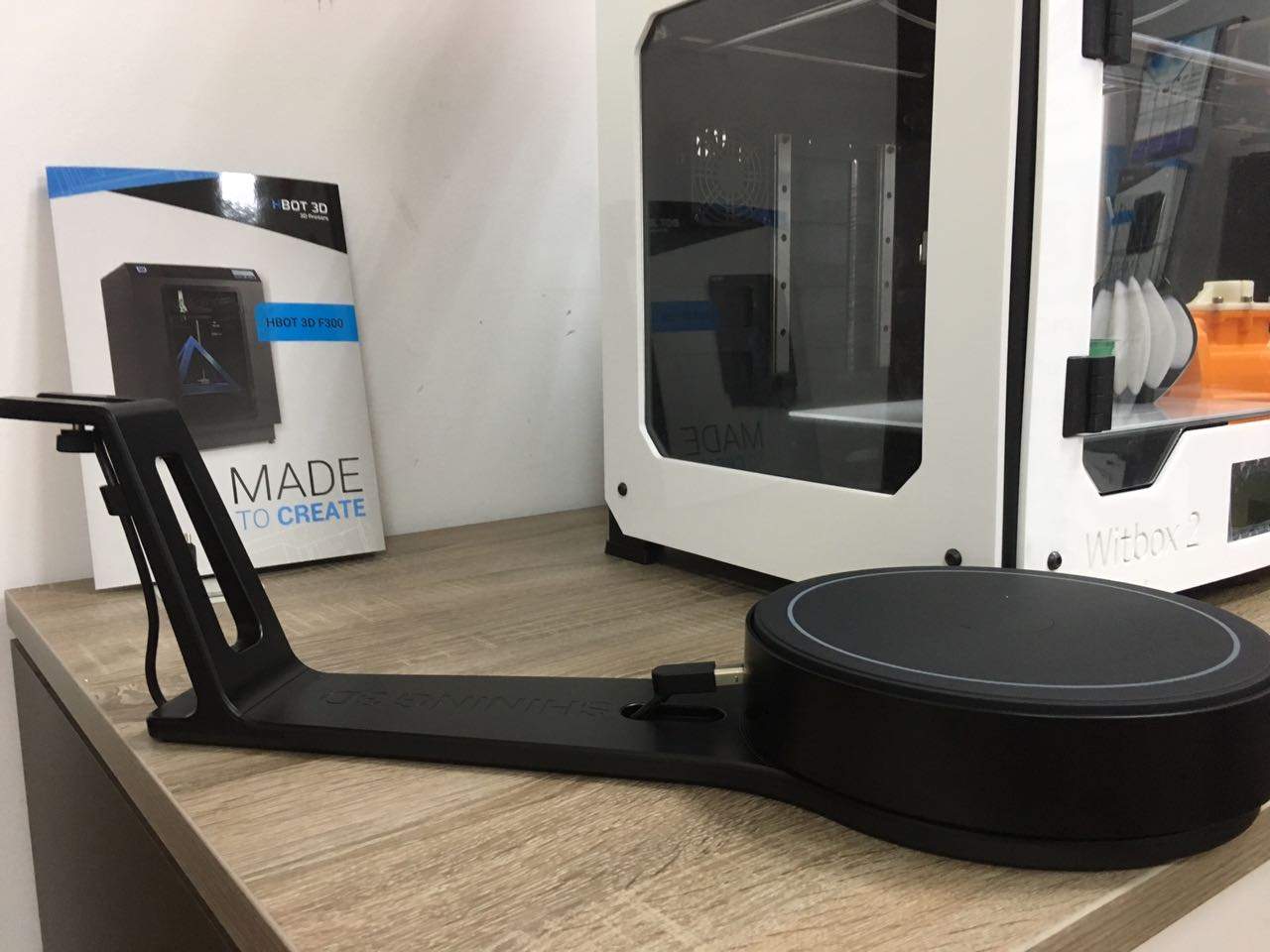
Set the turntable on the base.
Fix the block scan.
Connect the wires.
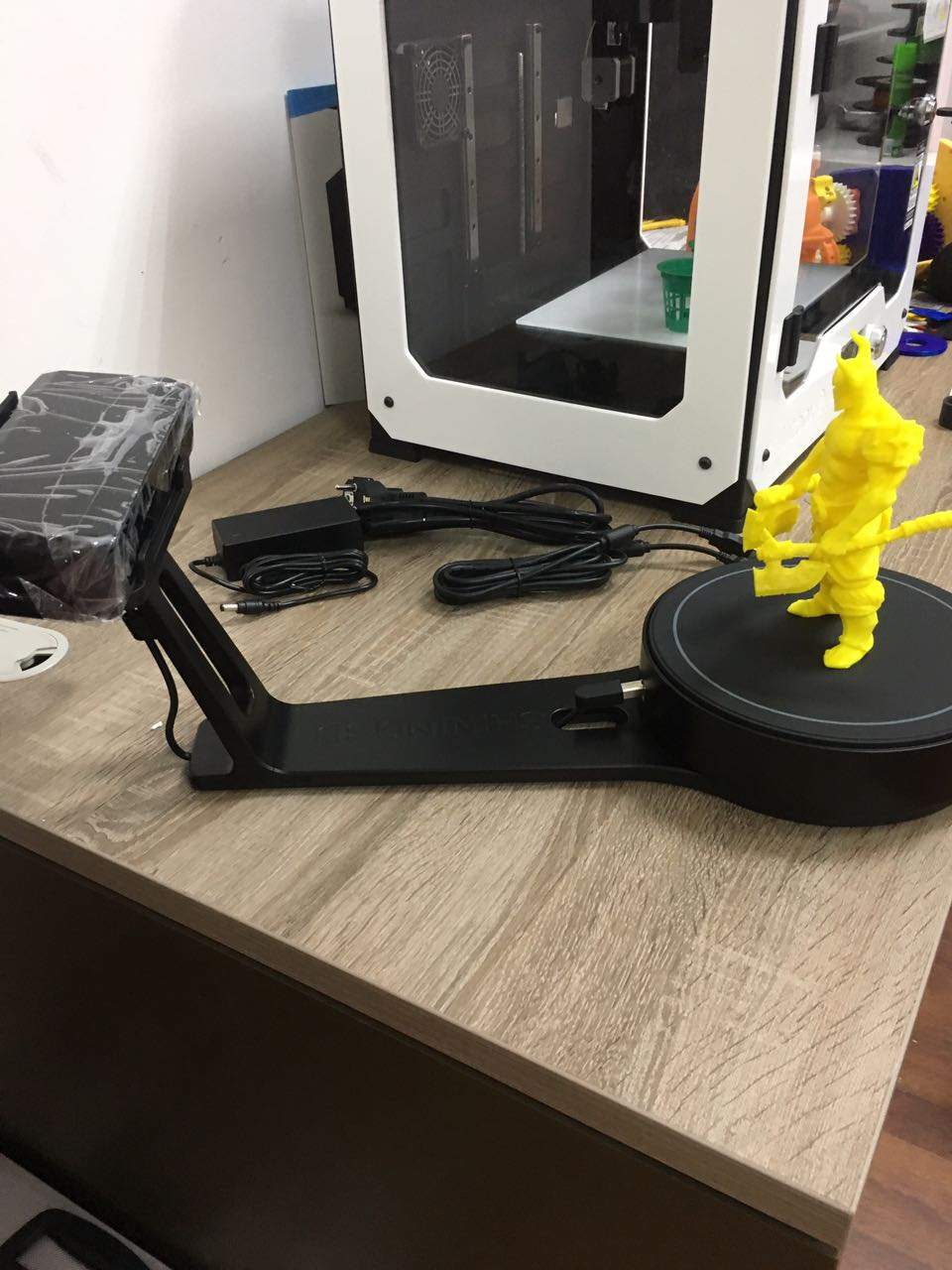
Everything! The scanner is ready to go. What features does EinScan-SE offer?
The manufacturer promises a full scan of the item placed on the table in just 8 seconds. The accuracy is 0.1 mm. This is a very worthy result, comparable with devices of a higher class.
Naturally, it should be borne in mind that the stated task execution time is relevant only if the requirements for the computer to which the scanner is connected are met.

They are pretty average by today's standards:
Video card with a memory of at least 1 GB.
Intel i5 processor or more powerful.
RAM of 8 GB.
One USB 2.0 or 3.0 port.
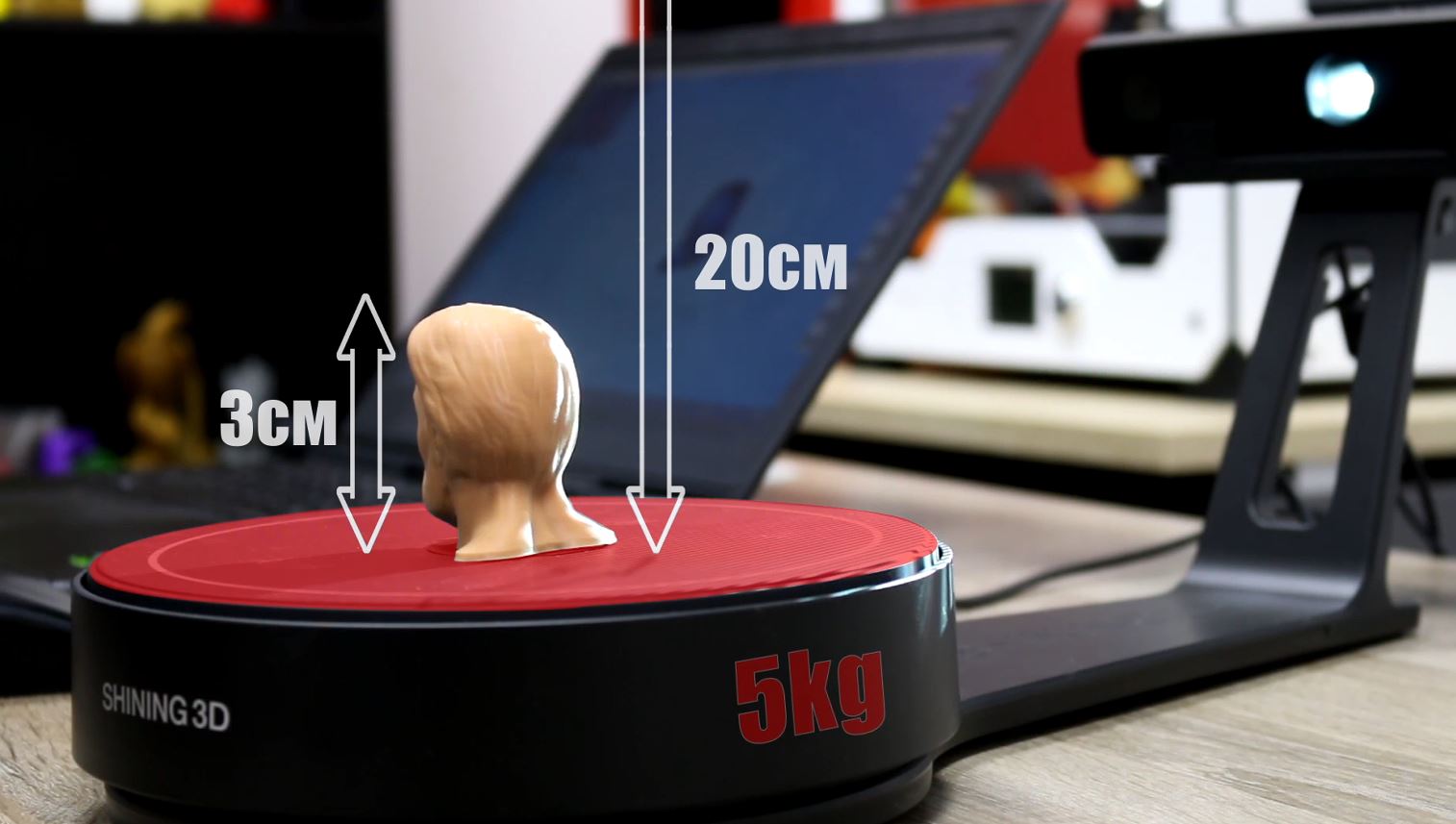
On the turntable, it is allowed to scan items with dimensions from 3 to 20 cm and weighing up to 5 kg. For larger objects, a static mode is provided, allowing you to work with sizes up to 700x700x700 mm.

The software saves scanned models in the most common formats: OBJ, STL, ASC, PLY.
Download the software on the official Einscan website.
Examples of the device can be found on the Sketchfab website, which contains not only pictures, but also STL models.

View 3D image and download STL file

View 3D image and download STL file

View 3D image and download STL file .
The new generation of scanners is made at the same high level as the previous EinScan-S and EinScan-Pro. Significantly increased the speed of work, while the price of the device only increased slightly.
Most importantly, the manufacturer continues to promote the idea of 3D scanning, available to everyone. All basic operations when working with equipment are automated and the process takes place “in one click”.
Thus, 3D scanning, formerly exclusively the prerogative of large companies, comes into the lives of ordinary people. Not the last role is played in this and active cost reduction.
Who is too lazy to read, or wants to see, what we are talking about here, can get acquainted with our new video review Overview of the 3D Einscan SE scanner from the company 3Dtool (manufacturer Shining3D)
You can learn more about the possibilities or purchase EinScan-SE in our office.

In April of this year, the company introduced budget scanners of a new generation of EinScan-SE, and now, after only two months, they are already in Russia. A test sample also appeared in our office, so we are in a hurry to acquaint readers with it in detail by demonstrating how the end user gets it.
Specifications:
Camera resolution: 1.3 MP;
Number of cameras: 2;
Light source: white light;
Scan mode: fixed, automatic;
Minimum scanning area: 30x30x30 mm;
Maximum scanning area (automatic mode): 200x200x200 mm;
Maximum scanning area (fixed mode): 700x700x700 mm;
3D scanning speed (fixed mode): 8 seconds;
3D scanning speed (automatic mode): 2 minutes;
Distance to the object: 290-480 mm;
Scanning accuracy: 0.1 mm;
Data format: OBJ, STL, ASC, PLY;
Compatible with OS: Win7, Win8, Win10 (64 bit);
Dimensions: 570 x 210 x 210 mm;
Weight: 2.5 kg;
Warranty: 1 year.
Packaging

The scanner is delivered in a white cardboard box with dimensions: 570x210x210 mm and a mass of about five kilograms, equipped with a convenient carrying handle. The very same device assembly weighs only 2.5 kg.

Open the box and see the cradle of thick foam. Components are located in separate slots, and in the upper part lie: gauge fields, instructions, power supply and various trivia.

In the lower lodgement are: a scanning unit, a bracket for mounting and a swivel table. The packaging is well thought out and reliably protects the contents from accidental damage.
Accessories

The most important part of the device is the scan unit. It is equipped with two cameras and a projector.

The turntable for scanning has high quality workmanship. No squeaks. All parts fit perfectly together.

Calibration field for initial scanner setup. How to work with it is shown in detail in the instructions.

The basis for placing the remaining parts of the scanner.
The main nodes are connected using a USB cable.
Instruction
In order to assemble the scanner in working position, it is enough to read the instructions. The whole process is shown step by step and with explanatory illustrations. Everything is clear and simple, as in the instructions for IKEA furniture.

The main ideology of Shining 3D is the creation of universal equipment available for use by everyone, even if they do not have special experience in 3D scanning. The assembly and configuration of EinScan-SE is maximally simplified.

Not difficult and calibration. Just follow the instructions.

The scanning process is fully automated, so a beginner can handle it.
Assembly
All items on the table. What next?

Set the turntable on the base.
Fix the block scan.
Connect the wires.

Everything! The scanner is ready to go. What features does EinScan-SE offer?
The manufacturer promises a full scan of the item placed on the table in just 8 seconds. The accuracy is 0.1 mm. This is a very worthy result, comparable with devices of a higher class.
Naturally, it should be borne in mind that the stated task execution time is relevant only if the requirements for the computer to which the scanner is connected are met.

They are pretty average by today's standards:
Video card with a memory of at least 1 GB.
Intel i5 processor or more powerful.
RAM of 8 GB.
One USB 2.0 or 3.0 port.

On the turntable, it is allowed to scan items with dimensions from 3 to 20 cm and weighing up to 5 kg. For larger objects, a static mode is provided, allowing you to work with sizes up to 700x700x700 mm.

The software saves scanned models in the most common formats: OBJ, STL, ASC, PLY.
Download the software on the official Einscan website.
Scan examples
Examples of the device can be found on the Sketchfab website, which contains not only pictures, but also STL models.

View 3D image and download STL file

View 3D image and download STL file

View 3D image and download STL file .
Impressions of use
The new generation of scanners is made at the same high level as the previous EinScan-S and EinScan-Pro. Significantly increased the speed of work, while the price of the device only increased slightly.
Most importantly, the manufacturer continues to promote the idea of 3D scanning, available to everyone. All basic operations when working with equipment are automated and the process takes place “in one click”.
Thus, 3D scanning, formerly exclusively the prerogative of large companies, comes into the lives of ordinary people. Not the last role is played in this and active cost reduction.
Who is too lazy to read, or wants to see, what we are talking about here, can get acquainted with our new video review Overview of the 3D Einscan SE scanner from the company 3Dtool (manufacturer Shining3D)
You can learn more about the possibilities or purchase EinScan-SE in our office.
All Articles